CO2 Benefits Exceed Costs by … 50:1, more?
By Roger Bezdek and Paul Driessen -- February 11, 2014Cap-and-trade, carbon taxation, net social cost for carbon: all assume that increasing emissions of carbon dioxide (CO2) and other greenhouse gases by mankind have injurious effects that are not accounted for in private activity. But the politically incorrect is intellectually correct: CO2 emissions make life better – even possible – for people, the economy, and the ecosphere.
Cost/Benefit Analysis
Weighing risks, costs and benefits is fundamental to life. We do it every day – when walking, driving, showering, heating our homes, and using stairs, ladders and tools; and when balancing the cost of new payments versus the benefits of a better home or car. The alternative is hunkering down in a bedroom or cave – until a lightning bolt, tornado, hurricane or armed burglar disturbs our false sense of security.
That is why government agencies are required to assess the benefits and costs of proposed regulations. Otherwise, officials could simply tout and exaggerate the supposed benefits of a rule, minimize its heavy costs, or ignore the values of the activity or product they want to regulate.
They could focus on the alleged risks of using a chemical, while disregarding the many ways it enhances and safeguards lives. They could abuse their power, to drive agendas that actually reduce our health and welfare.
Fed’s ‘Social Cost of Carbon’
That is now happening with the federal government’s efforts to “prevent dangerous climate change.”
In February 2010, a federal Interagency Working Group (IWG) attempted to estimate what it calls the “social cost of carbon” (SCC): the alleged risks and impacts of using hydrocarbons and emitting carbon dioxide (CO2), which some scientists and politicians say is causing dangerous manmade global warming. The SCC is an estimate of the monetized damages associated with an incremental increase in “carbon” emissions in a given year; it is meant to be a comprehensive estimate of climate change damages.
With little publicity, debate or public input, the IWG initially set the cost at $22 per ton of carbon dioxide emitted. Then, in May 2013 – again with little notice – the group increased its SCC estimate to $36/ton.
The new, higher SCC estimates were used for the first time in a June 2013 proposed rule on efficiency standards for microwave ovens. A February 2014 proposal seeks to increase energy efficiency for cell phones and laptops, while reducing CO2 emissions and advancing President Obama’s energy and climate change agenda. More such rulemakings are certain to follow.
These SCC estimates have potentially ominous implications for all fossil fuels, and for the businesses, workers and consumers that depend on reliable, affordable energy. Quite simply, arbitrarily high SCC values will force oil, natural gas and coal out of many markets and sectors and, via regulation, make fossil fuels ineligible for many uses.
Federal agencies claim they are properly using the estimates to incorporate the social benefits of reducing CO2 emissions into benefit-cost analyses of regulatory actions. That is not the case. Under Executive Order 12866, federal agencies are required “to assess both the costs and the benefits of the intended regulation and, recognizing that some costs and benefits are difficult to quantify, propose or adopt a regulation only upon a reasoned determination that the benefits of the intended regulation justify its costs.”
In practice, the way these agencies are using the SCC displays major deficiencies and reflects a gross failure to follow this important and sensible law. The Management Information Services (MISI) analysis examines this in detail. [1]
Fundamental Flaws
First and most fundamentally, under the law and in accordance with any valid and honest benefit-cost (B-C) analysis, both the benefits and the costs of CO2 must be considered. Thus far, the EPA and other government agency analyses, press releases and regulatory proposals have highlighted only the alleged costs of using carbon-based fuels – with an emphasis on their supposed effects on climate change. The agencies have never mentioned or compared the many clear benefits associated with those fuels.
That is not only a violation of clear law. It also makes the agencies’ analyses – and all these proposed rulemakings – questionable, improper and even fraudulent.
Second, EPA claims the U.S. government is “committed to updating the current estimates, as the science and economic understanding of climate change and its impacts on society improve over time.” That too is questionable. Given the Obama Administration’s history and agenda, it is highly likely that SCC values will only increase in forthcoming updates, and there are literally trillions of dollars at stake.
The IWG methodology used in developing SCC estimates is not rigorous. Indeed, it is flexible enough to produce almost any estimates that any agency might desire. The IWG used three integrated assessment models to estimate the SCC. These models are supposed to combine climate processes, economic growth, and feedbacks between the climate and the global economy, into a single modeling framework.
More Research Needed
However, only limited research links climate impacts to economic damages, and much of it is speculative, at best. Even the IWG admits that the exercise is subject to “simplifying assumptions and judgments, reflecting the various modelers’ best attempts to synthesize the available scientific and economic research characterizing these relationships.” [emphasis added]
Further, each model uses a different approach to translate global warming into damages, and transforming the stream of economic damages over time into a single value requires “judgments” about how to discount them. Moreover, federal officials have been highly selective in choosing which “available scientific and economic research” they will utilize.
As objective analysts have concluded, the SCC estimates developed by the IWG have little or no validity and are “close to useless.” [2][emphasis added]
Third, the differences in the 2010 and 2013 SCC estimates are so large, and of such immense potential significance, as to raise serious questions regarding their integrity and validity – especially since, prior to February 2010, the “official” Federal government SCC estimate was zero!
If any valid, certifiable, reproducible government economic estimates (such as GDP or unemployment) were revised by 30 to 50 percent within a 3-year period it would be a farce, a fraud, a scandal. For example, in 2010, U.S. GDP was estimated to be about $14.6 trillion. While slight revisions to GDP estimates are always made in subsequent years, it is inconceivable that three years later government officials could possibly present a revised estimate of 2010 GDP totaling $19 trillion to $22 trillion.
Fourth, as noted, the SCC estimates will be updated over time. Thus, it is likely that current SCC estimates will be repeatedly and substantially revised in the future – perhaps in both directions, but more likely only upward. How useful or relevant can the SCC estimates be if they continually change over time? Will regulatory decisions based on one set of SCC estimates be revisited as the estimates change?
Neglecting Hydrocarbon Benefits
Finally, and most importantly, the Environmental Protection Agency, Department of Energy and other federal agencies make no attempt whatsoever to estimate carbon benefits or positive carbon externalities. In other words, they completely ignore the obvious and enormous benefits of using fossil fuels … and of emitting carbon dioxide!
| The IWG process hypothesizes almost every conceivable carbon “cost” – including costs to agriculture, forestry, water resources, forced migration, human health and disease, coastal cities, ecosystems and wetlands. Yet it fails to estimate any carbon benefits. Even more incredibly, the agencies have done this in complete disregard of EO 12866 and a recent OMB declaration that careful consideration of both costs and benefits is important in determining whether a regulation is worth implementing at all. |
Ever since the concept of B-C analysis was developed in the 1950s, experts have sought to assess both the costs and the benefits of a proposed initiative, program or regulation – to determine if the benefits exceed the costs. Indeed, any valid B-C analysis must include both costs and benefits. Moreover, as already noted, under EO 12866, agencies are required “to assess both the costs and the benefits of the intended regulation.”
It is thus incredible that the IWG process hypothesizes almost every conceivable carbon “cost” – including costs to agriculture, forestry, water resources, forced migration, human health and disease, coastal cities, ecosystems, wetlands and many others. Yet it fails to estimate any carbon benefits. Even more incredibly, the agencies have done this in complete disregard of EO 12866 and a recent OMB declaration that careful consideration of both costs and benefits is important in determining whether a regulation is worth implementing at all.
However, the successful development and utilization of fossil fuels facilitated successive industrial revolutions, launched the modern world, created the world’s advanced technological society, and enabled the high quality of life that many now take for granted. Over the past 200 years, primarily because of hydrocarbon energy, people’s health and living standards soared, global life expectancy more than doubled, human population increased eight-fold, and average incomes increased eleven-fold.
Concurrently, because hydrocarbon use generates CO2, human carbon dioxide emissions increased 2,800-fold, from about 3 million tons per year to 8.4 billion tons annually – and atmospheric concentrations rose from about 320 ppm carbon dioxide to nearly 400 ppm (from 0.032 percent of the atmosphere to 0.040 percent). The Obama Administration (wrongly) regards CO2 as a pollutant, and this slight rise in atmospheric levels as “dangerous.” That is an erroneous, shortsighted perception that ignores reality.
“The Gas of Life”
In truth, carbon dioxide is “the gas of life,” the basis of all life on Earth. It facilitates plant growth, and enhances agricultural productivity. It is the primary raw material utilized by plants to produce the organic matter out of which they construct their tissues, which subsequently become sources of fiber, building materials and food for humans and animals.
The relationship between world GDP and CO2 emissions over the past century shows a strong and undeniable relationship between world GDP and the CO2 emissions from fossil fuels. In fact, the fossil fuels that provide the vast bulk of the world’s total energy needs – and from which CO2 is an essential byproduct – are creating $60 trillion to $70 trillion per year in world GDP! (Figure 1)
Population and economic growth will remain the key drivers behind increasing energy requirements. There is a strong causal relationship between world GDP and CO2 emissions over the past two centuries, and this relationship is forecast to continue for the foreseeable future. At present, 81 percent of the world’s energy is comprised of fossil fuels and forecasts indicate that, for at least the next several decades, 75 to 80 percent of global energy requirements will continue to be supplied by fossil fuels.
That means any reductions in United States fossil fuel use or carbon dioxide emissions will be almost imperceptible amidst the world’s huge and rapidly increasing levels of both. And these total human CO2 emissions pale by comparison to natural emissions from volcanoes, subsea vents, forest fires, and the release of CO2 from sea waters during periods of oceanic warming.
Regarding the essential role of energy in our lives, seminal research has concluded that:
· “Ours is a high energy civilization based largely on combustion of fossil fuels.” [3]
· “The theoretical and empirical evidence indicates that energy use and output are tightly coupled, with energy availability playing a key role in enabling growth.” [4]
· “The bottom line is that an enormous increase in energy supply will be required to meet the demands of projected population growth and lift the developing world out of poverty without jeopardizing current standards of living in the most developed countries.”[5]
How do these indirect CO2 benefits compare to the working group’s SCC estimates? Even though the SCC estimates are at best of questionable validity, we nevertheless compared the carbon dioxide costs and benefits (on a per-ton basis), utilizing both the IWG’s 2013 and 2010 SCC estimates.
The benefits of using carbon-based fuels clearly outweigh any hypothesized costs – by literally orders of magnitude: anywhere from 50-to-1 to as much as 500-to-1! (Figures 2 and 3)
To place these findings in perspective, normally, B-C ratios in the range of 2-to-1 or 3-to-1 are considered favorable. In other words, when the benefits of a regulation exceed its costs by a 2:1 or 3:1 margin, the proposed rule would pass muster.
| The benefits of using carbon-based fuels clearly outweigh any hypothesized costs – by literally orders of magnitude: anywhere from 50-to-1 … to as much as 500-to-1! |
However, in this case, the costs of these proposed rules exceed their benefits by a 50:1 or even 500:1 margin. The SCC standards and assorted proposed rules and standards are obviously enormously detrimental to American lives, jobs, living standards, health and welfare. And yet they are being imposed in the name of preventing “dangerous manmade climate change” – which itself is highly speculative.
Put yet another way, the benefits of carbon dioxide overwhelmingly outweigh the estimated CO2 costs – no matter which government reports or discount rates are used. In fact, any SCC estimate on might choose is relatively so small as to be in the statistical noise of the estimated CO2 benefits.
Since much of the relevant SCC debate concerns future emissions, future potential costs, and future policies, we analyzed forecast CO2 benefits compared to available SCC forecasts. Figure 4 shows the forecasted relationship between world GDP and CO2 emissions in the EIA reference case through 2040. Once again, future economic growth – as measured by world GDP – requires fossil fuels which, in turn, generate CO2 emissions.
Thus, according to EIA data and forecasts, fossil fuels, which generate CO2 emissions, are essential for world economic growth, and significant CO2 emissions reductions will be associated with significant reductions in economic growth.
Realistic CO2 Benefit/Cost Ratios
Management Information Services, Inc. (MISI) also utilized the information shown in Figure 4 in conjunction with the IWG’s forecasted SCC estimates, to develop estimated future carbon dioxide benefit-cost ratios. (Figure 5) This graph indicates that the B-C ratios for CO2 remain extremely high all the way through 2040 – and range from about 50-to-1 to 250-to-1.
Figure 5
How viable are these estimates? Based on our analysis and experience, we conclude that the benefit estimates are, if anything, more understandable, believable and robust than the cost estimates.
The SSC estimates are questionable (to be generous in our terminology), because they are based on highly speculative assumptions, forecasts, IAM simulations, damage functions, discount rates, and other “best guesses” or dart-boarding. Independent assessments concluded that these estimates suffer from uncertainty, speculation and lack of information about critical variables; that they “raise serious questions of science, economics and ethics”; [6] and that they are “close to useless” as tools for policy analysis. [7]
The hydrocarbon benefit estimates developed here are simple, straightforward, logical, understandable and based on more than two centuries of historical fact. There is extensive literature (such as Indur Goklany’s The Improving State of the World) verifying the critical and essential role of fossil fuels in creating and powering technologies, wealth, high standards of living, and steadily improving health, welfare and longevity for billions of people. That is why so many nations are striving to generate more electricity, and offer more and better transportation options, using fossil fuels.
This is undeniable, a truism, a statement of fact – even though some may consider it to be an inconvenient truth. Further, this relationship will remain well into the foreseeable future.
The CO2 benefits are almost entirely indirect. This vitally important trace gas comes in part from fossil fuel use, which generates carbon dioxide – which in turn helps plants grow better, faster, more robustly, even under conditions scarce water and other environmental constraints, to “green” our planet, improve wildlife habitats, and provide more nutritious food for more people.
The benefit estimates derived here are extremely large, compared even to the questionable Interagency Working Group “social costs of carbon” estimates. As a result, the B-C ratios are very high.
The benefit estimates can be modified. They can be scaled, adjusted, forecast, expressed as average or marginal values; be converted to different base-year dollars; be estimated for past, current or future years; and modified in other ways. Nevertheless, they will remain orders of magnitude larger than any reasonable SCC estimates – and, therefore the B-C ratios will remain very high.
This brings us back to Executive Order 12866. Under this EO, agencies are required to assess both the costs and the benefits of a proposed regulation. Moreover, they are to proceed with rulemakings “only on the basis of a reasoned determination that the benefits justify the costs.”
The implications of our research for such assessments are obvious.
Prodigious amounts of fossil fuels will be required to sustain future economic growth, especially in the non-OECD nations. If the world is serious about lessening the need for human, animal, wood and dung energy, maintaining and increasing economic growth, reducing energy deprivation and human poverty, improving human and civil rights, and increasing standards of living, health and longevity in the non-OECD nations – then massive fossil fuel utilization will be required, for decades to come.
Achieving these benefits for billions of poor people worldwide – while also maintaining them for American, European and other developed nation families – translates into a simple fact: the benefits of fossil fuels far outweigh any conceivable costs, and will continue to do so for decades to come.
Similarly, the benefits of carbon dioxide emitted in the process of producing this energy also overwhelmingly outweigh the claimed and estimated costs associated with that CO2 – no matter which SCC estimates or assumptions are used. In fact, compared to the benefits of carbon dioxide for forest, grassland and food crop growth, the SCC cost estimates are relatively so small as to be in the statistical noise of the estimated CO2 benefits.
In this context, there is also a critical need far more a balanced, broad-based and honest assessment of “dangerous manmade climate change” claims. Literally thousands of scientists do not agree that human carbon dioxide emissions are a primary cause of climate change, or that any changes in our weather or climate are bound to be harmful, dangerous or even catastrophic. However, their views have been deliberately and systematically ignored and taken out of the policy-making process, because the process has unfortunately become political and ideological, rather than science-based and analytical.
These facts must be used to inform energy, environmental, and regulatory policies. Otherwise, the regulations will continue to be far worse than the harms they supposedly redress. For the Interagency Working Group, Environmental Protection Agency, Department of Energy, Department of the Interior and other Federal agencies to continue ignoring the true costs and benefits, the requirements of law under EO 12866, and sixty years of informed benefit-cost protocols and practices, is illegal, unethical and contrary to the best interests of our nation, its citizens and all humans.
_____________
Dr. Roger Bezdek is an internationally recognized energy analyst and President of Management Information Services, Inc. (MISI), in Washington DC. He has 30 years’ experience in research and management in the energy, utility, environmental and regulatory areas, serving in private industry, academia and the federal government. He has served as a research director in the Department of Energy, a senior adviser in the U.S. Treasury Department, a U.S. energy delegate to the EU and NATO, and a consultant to the White House, federal and state government agencies, and various corporations and research organizations. His most recent book is The Impending World Energy Mess.
Paul Driessen is senior policy analyst for the Committee For A Constructive Tomorrow and other public policy research organizations. He is the author of Eco-Imperialism: Green power – Black death and numerous articles on energy, the environment, climate change and global health for the Wall Street Journal, Washington Times, Investor’s Business Daily, Risk Management magazine, and many other print and online publications. Driessen is a former aide for the United States Senate, Department of the Interior, an energy trade association and a governor’s office.
References
1 Management Information Services, Inc., The Social Costs of Carbon? No, the Social Benefits of Carbon, prepared for the American Coalition for Clean Coal Electricity, Washington, DC, January 2014.
See also Paul C. “Chip” Knappenberger, “’Social Cost’ of Carbon vs. Climate Science,” January 31, 2014; Ramsey Cox, “Enzi: GAO Report Proves Coal Helps the Economy,” The Hill, February 5, 2014; and Kathleen Hartnett White, “EPA’s Flawed Science: From Pretense of Knowledge to Fatal Conceit,” June 5, 2012.
2 Robert S. Pindyck, “Climate Change Policy: What Do The Models Tell Us?” National Bureau of Economic Research, Working Paper 19244, July 2013.
3 Vaclav Smil, Energy at the Crossroads: Global Perspectives and Uncertainties, MIT Press, 2005.
4 David I. Stern,”The Role of Energy in Economic Growth,” The United States Association for Energy Economics and the International Association for Energy Economics, USAEE-IAEE WP 10-055, November 2010.
5 James H. Brown, William R. Burnside, Ana D. Davidson, John P. DeLong, William C. Dunn, Marcus J. Hamilton, Jeffrey C. Nekola, Jordan G. Okie, Norman Mercado-Silva, William H. Woodruff, and Wenyun Zuo, “Energetic Limits to Economic Growth,” BioScience, January 2011, Vol. 61, No. 1.
6 National Research Council, Hidden Costs of Energy: Unpriced Consequences of Energy Production and Use, Washington, DC: National Academies Press, 2009.
7 Pindyck, op. cit.
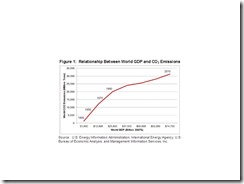
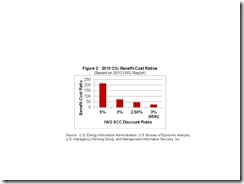
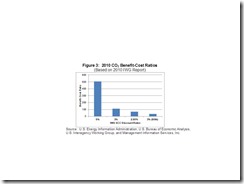
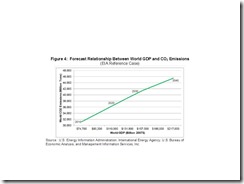
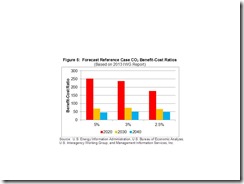
[…] http://www.masterresource.org/2014/02/co2-benefits-exceed-costs/#more-29629 […]
[…] CO2 Benefits Exceed Costs by…50:1, More? Richard Bezdek & Paul Driessen, Master Resource, 11 February 2014 […]
[…] CEQ employs the same “social cost of carbon” analyses that other agencies are using to justify appliance, vehicle and other efficiency and […]
[…] CEQ employs the same “social cost of carbon” analyses that other agencies are using to justify appliance, vehicle and other efficiency and […]
[…] CEQ employs the same “social cost of carbon” analyses that other agencies are using to justify appliance, vehicle and other efficiency and […]
[…] CEQ employs the same “social cost of carbon” analyses that other agencies are using to justify appliance, vehicle and other efficiency and […]
[…] CEQ employs the same “social cost of carbon” analyses that other agencies are using to justify appliance, vehicle and other efficiency and […]
[…] CEQ employs the same “social cost of carbon” analyses that other agencies are using to justify appliance, vehicle and other efficiency and […]
[…] to recount here, but many are shameful, intolerable, dishonest and even lethal.One involves the “social cost of carbon” analysis devised by U.S. Environmental Protection Agency and other federal government agencies. […]
[…] Coal:~keep coal & social benefits of carbon.OIL: World Oil (Contrib Ed), CFACT; CO2 Benefits Exceed Costs by …50:1… with Paul […]
[…] Time to Play Offense Goklany for COP21: The Wonders and Happy Data of Carbon Dioxide (CO2) CO2 Benefits Exceed Costs by … 50:1, more? Carbon Dioxide: The Green Greenhouse Gas of Life (and ‘miracle molecule’) U.S. Rejection of […]
[…] Time to Play Offense Goklany for COP21: The Wonders and Happy Data of Carbon Dioxide (CO2) CO2 Benefits Exceed Costs by … 50:1, more? Carbon Dioxide: The Green Greenhouse Gas of Life (and ‘miracle molecule’) U.S. Rejection of […]
[…] CO2, as Vijay Jayaraj has explained. Consider that benefits may exceed costs by 50 times, as posited by Roger Bezdek and Paul […]
[…] employment, crops, parks, forests and much more. Indeed, a comprehensive, honest analysis shows the benefits of carbon exceed their costs by at least 50:1, to as much as […]
[…] employment, crops, parks, forests and much more. Indeed, a comprehensive, honest analysis shows the benefits of carbon exceed their costs by at least 50:1, to as much as […]
[…] parks, forests and much more. Indeed, a comprehensive, honest analysis shows the benefits of carbon exceed their costs by at least 50:1, to as much as […]
[…] a comprehensive, honest analysis shows the benefits of carbon exceed their costs by at least 50:1, to as much as […]
[…] a comprehensive, honest analysis shows the benefits of carbon exceed their costs by at least 50:1, to as much as […]
[…] employment, crops, parks, forests and much more. Indeed, a comprehensive, honest analysis shows the benefits of carbon exceed their costs by at least 50:1, to as much as […]
[…] * The climate-obsessed IN-crowd is INsatiable in its hunger for global power – but INcapable of dealing with reality and INsane for endlessly repeating the same tired tropes, ignoring evidence that contradicts its claims, vilifying scientists who disagree with them, and ignoring the enormous benefits of fossil fuels. […]
[…] * The climate-obsessed IN-crowd is INsatiable in its hunger for global power – but INcapable of dealing with reality and INsane for endlessly repeating the same tired tropes, ignoring evidence that contradicts its claims, vilifying scientists who disagree with them, and ignoring the enormous benefits of fossil fuels. […]
[…] * The climate-obsessed IN-crowd is INsatiable in its hunger for global power – but INcapable of dealing with reality and INsane for endlessly repeating the same tired tropes, ignoring evidence that contradicts its claims, vilifying scientists who disagree with them, and ignoring the enormous benefits of fossil fuels. […]
[…] * The climate-obsessed IN-crowd is INsatiable in its hunger for global power – but INcapable of dealing with reality and INsane for endlessly repeating the same tired tropes, ignoring evidence that contradicts its claims, vilifying scientists who disagree with them, and ignoring the enormous benefits of fossil fuels. […]
[…] * The climate-obsessed IN-crowd is INsatiable in its hunger for global power – but INcapable of dealing with reality and INsane for endlessly repeating the same tired tropes, ignoring evidence that contradicts its claims, vilifying scientists who disagree with them, and ignoring the enormous benefits of fossil fuels. […]
[…] welfare of Americans. In the process, EPA ignored the incredible economic, health and welfare benefits of fossil fuels – and the fact that (even at just 0.04% of the atmosphere) carbon dioxide is the miracle […]
[…] welfare of Americans. In the process, EPA ignored the incredible economic, health and welfare benefits of fossil fuels – and the fact that (even at just 0.04% of the atmosphere) carbon dioxide is the miracle […]
[…] and welfare of Americans. In the process, EPA ignored the incredible economic, health and welfare benefits of fossil fuels – and the fact that (even at just 0.04% of the atmosphere) carbon dioxide is the miracle molecule […]
[…] and welfare of Americans. In the process, EPA ignored the incredible economic, health and welfare benefits of fossil fuels – and the fact that (even at just 0.04% of the atmosphere) carbon dioxide is the miracle molecule […]
[…] citizens. Within the procedure, EPA overlooked the fantastic financial, well being and welfare advantages of fossil fuels – and the truth that (even at simply zero.04% of the ambience) carbon dioxide is the miracle […]
[…] and welfare of Americans. In the process, EPA ignored the incredible economic, health and welfare benefits of fossil fuels – and the fact that (even at just 0.04% of the atmosphere) carbon dioxide is the miracle molecule […]
[…] citizens. Within the procedure, EPA neglected the fantastic financial, well being and welfare advantages of fossil fuels – and the truth that (even at simply zero.04% of the ambience) carbon dioxide is the miracle […]
[…] and welfare of Americans. In the process, EPA ignored the incredible economic, health and welfare benefits of fossil fuels – and the fact that (even at just 0.04% of the atmosphere) carbon dioxide is the miracle molecule […]
[…] and welfare of Americans. In the process, EPA ignored the incredible economic, health and welfare benefits of fossil fuels – and the fact that (even at just 0.04% of the atmosphere) carbon dioxide is the miracle molecule […]
[…] and welfare of Americans. In the process, EPA ignored the incredible economic, health and welfare benefits of fossil fuels – and the fact that (even at just 0.04% of the atmosphere) carbon dioxide is the miracle molecule […]
[…] and welfare of Americans. In the process, EPA ignored the incredible economic, health and welfare benefits of fossil fuels – and the fact that (even at just 0.04% of the atmosphere) carbon dioxide is the miracle molecule […]
[…] and welfare of Americans. In the process, EPA ignored the incredible economic, health and welfare benefits of fossil fuels – and the fact that (even at just 0.04% of the atmosphere) carbon dioxide is the miracle molecule […]
[…] welfare of Americans. In the process, EPA ignored the incredible economic, health and welfare benefits of fossil fuels – and the fact that (even at just 0.04% of the atmosphere) carbon dioxide is the miracle […]
[…] and welfare of Americans. In the process, EPA ignored the incredible economic, health and welfare benefits of fossil fuels – and the fact that (even at just 0.04% of the atmosphere) carbon dioxide is the miracle molecule […]